Stats New Zealand released data showing that net overseas migration (NOM) fell to 21,300 for the year ending April 2025, a decline from 90,900 a year earlier.

This represented a 2½ year low for NOM, driven by slowing arrivals of non-NZ citizens and elevated departures.
“Easing arrivals and strengthening departures of non-NZ citizens and still-sizeable net departures of NZ citizens reflect the relatively weak position of the NZ economy”, noted major bank ASB.
There was a provisional net migration gain of 66,900 non-New Zealand citizens in the year to April 2025, partly offset by 45,600 net departures of New Zealand citizens.
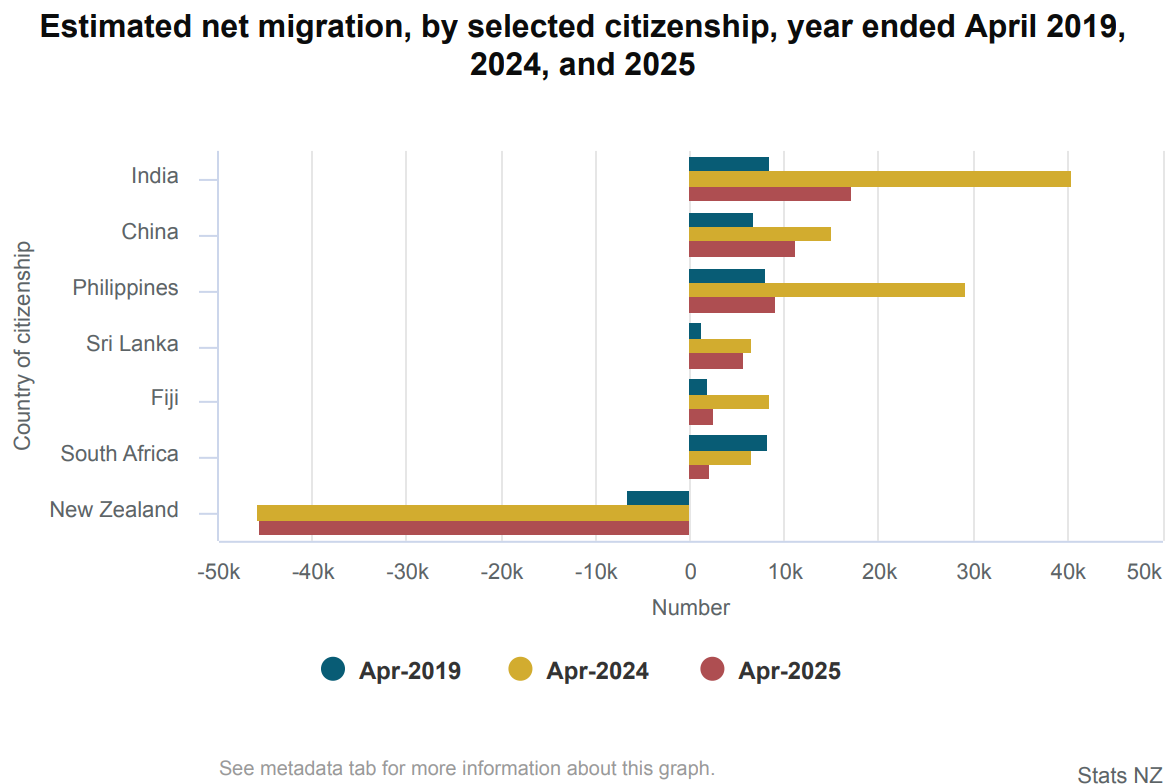
ASB noted that “Australia remains a magnet, with ancillary data suggesting Australia accounts for more than two-thirds of PLT departures of NZ citizens”.
Indeed, at 4.1%, Australia’s unemployment rate is significantly below New Zealand’s (5.1%).
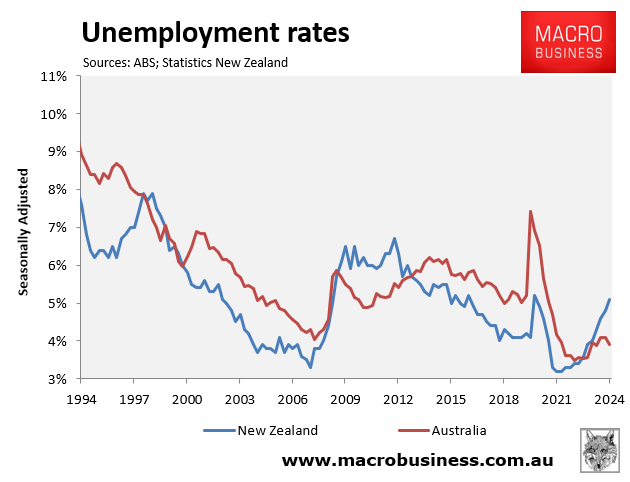
As a result, New Zealand is suffering a brain drain of prime-age Kiwis, with 18- to 30-year-olds comprising 27,200 (39%) of the 70,000 migrant departures of New Zealand citizens in the March 2025 year.
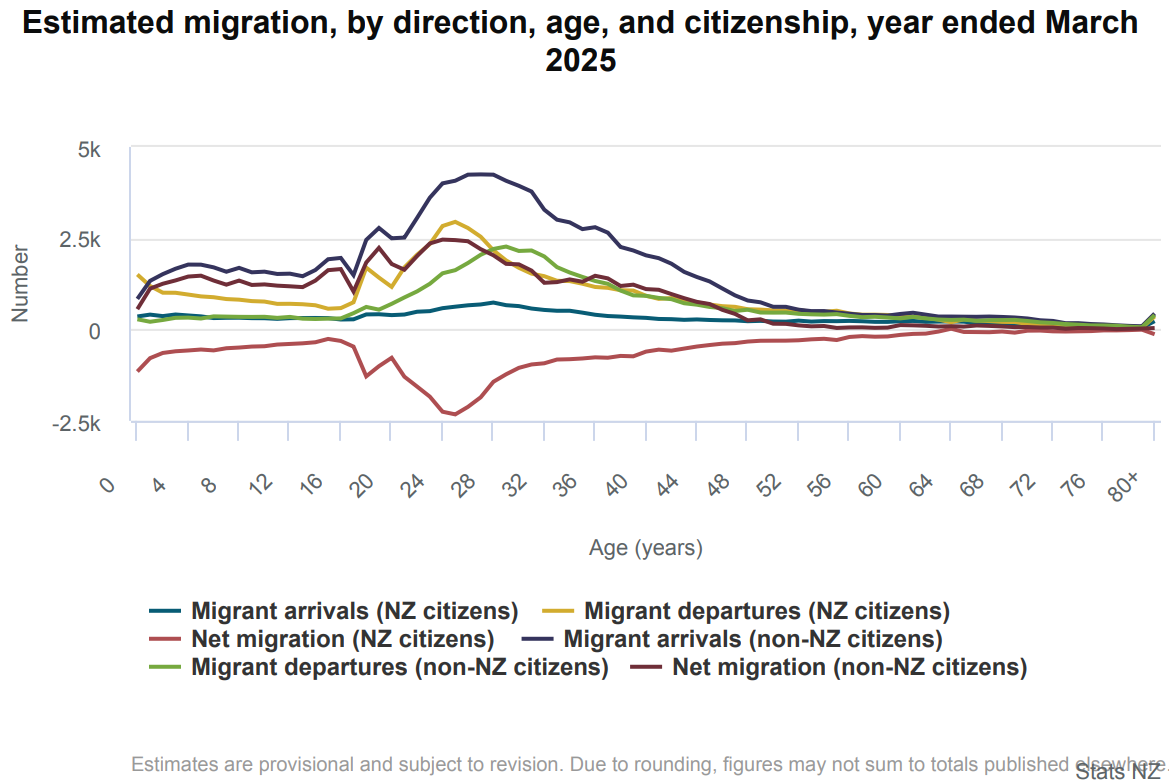
There is one shining light, however, with the slower NOM relieving demand in the housing market.
The “cooling in net immigration inflows from late 2023 peaks has likely contributed to the sluggish pace of consumer demand and the housing market”, noted ASB.
Unlike in Australia, housing in New Zealand has become increasingly affordable following heavy price falls and falling mortgage rates.
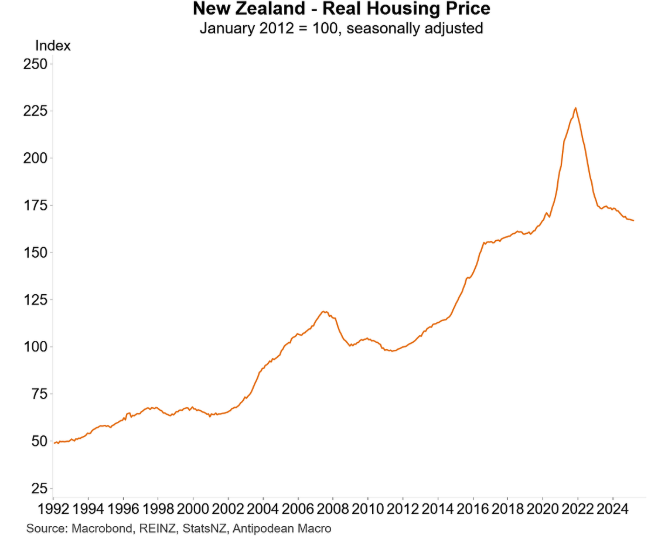
As illustrated above by Justin Fabo from Antipodean Macro, real housing prices in New Zealand have fallen back to pre-pandemic levels.
The combination of lower prices and interest rates has reduced mortgage repayments as a percentage of household income from around 50% to 35%, with more to come as mortgage rates are adjusted lower.
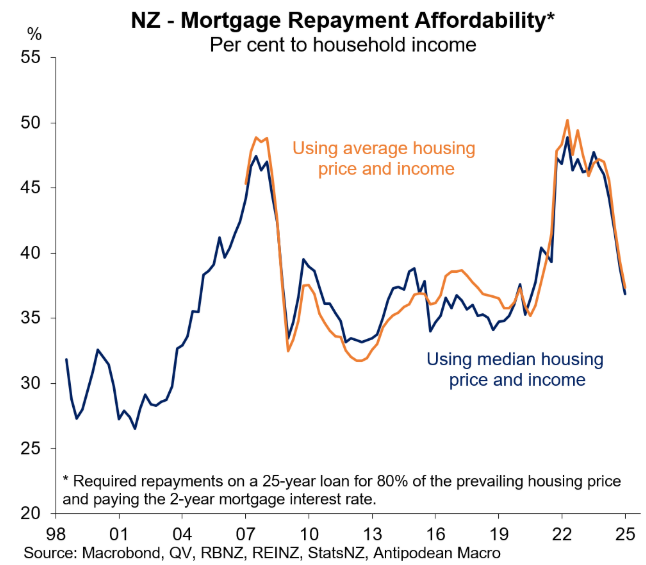
The improving housing affordability situation in New Zealand should logically curb the exodus of New Zealanders to Australia.

